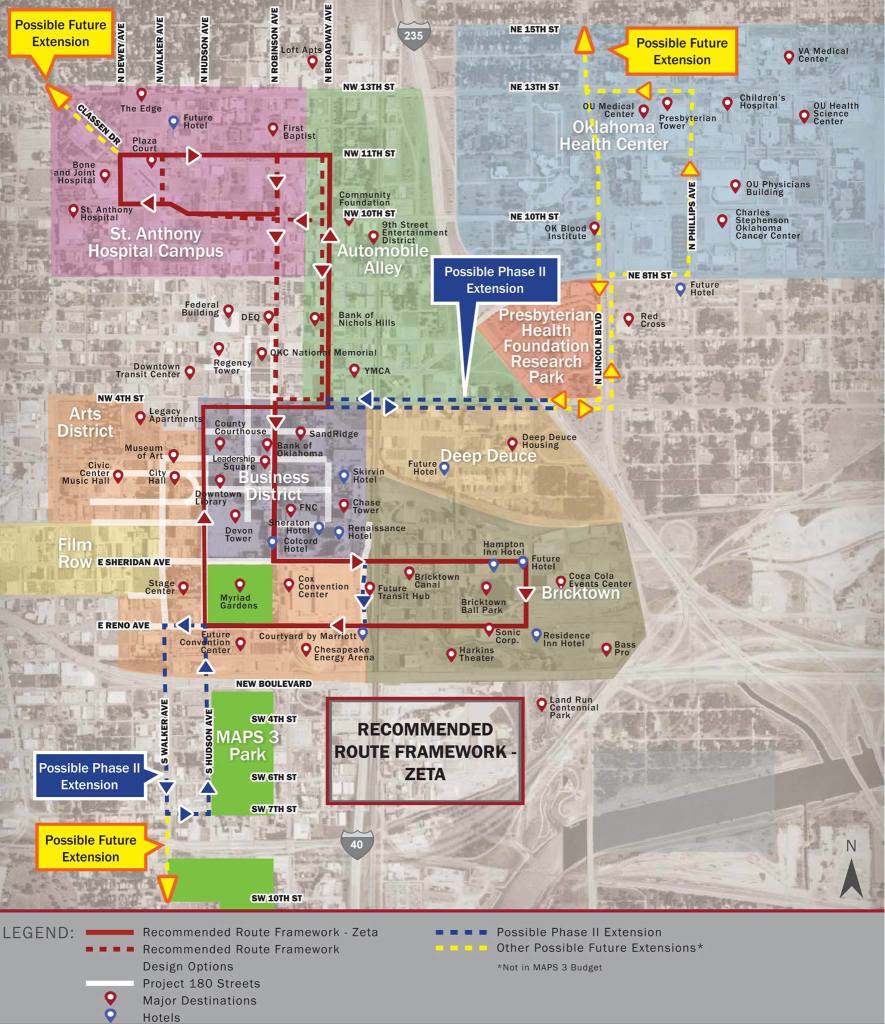Around the United States, you can’t find many more car-dependent cities than Oklahoma City and Tulsa. Our posts on how regional and American cities compare on commuting by biking, walking, and transit got a lot of attention. Even though it was just a simple visualization of Census data, the information was popular and quickly spread around the Internet after appearing in The Atlantic Cities, Streetsblog, Grist, the Pittsburgh Tribune-Review, Philly.com, and other news outlets.
Unfortunately, the new data revealed that both of Oklahoma’s major cities find themselves at the bottom of the list when it comes to allowing commuters the option to leave the car at home. For OKC and Tulsa, this is directly related to how the cities were designed during the 20th Century.
There are many reasons to pursue more biking, walking, and transit ridership in cities. It is no longer about simply reducing congestion. As Christopher Leinberger, Richard Jackson, Dan Burden, and other speakers at our Placemaking Conference this spring pointed out, cities must focus on alternatives to the car in order to attract economic development, improve public health, and enhance quality of life.
It is important to note that OKC and Tulsa are both working to provide viable alternatives to automobile dependency. Here are 3 ways they are making strides to get off the bottom of this list.
1. Adding Thousands of New Residents in Walkable Areas
Placing housing in close proximity to jobs and amenities is the best way to get more people to walk or bike to work. But proximity isn’t everything- It only works if the street network is dense and safe- like the historic grid pattern found in the urban cores of OKC and Tulsa.
Oklahoma City is experiencing an unprecedented wave of residential construction that is allowing thousands of people to live a short walk from downtown employers. About 700 units are under construction right now, and at least 800 more should be under construction by the spring. Since The Oklahoman’s Steve Lackmeyer reported on the boom last month, hundreds more apartments have been announced.
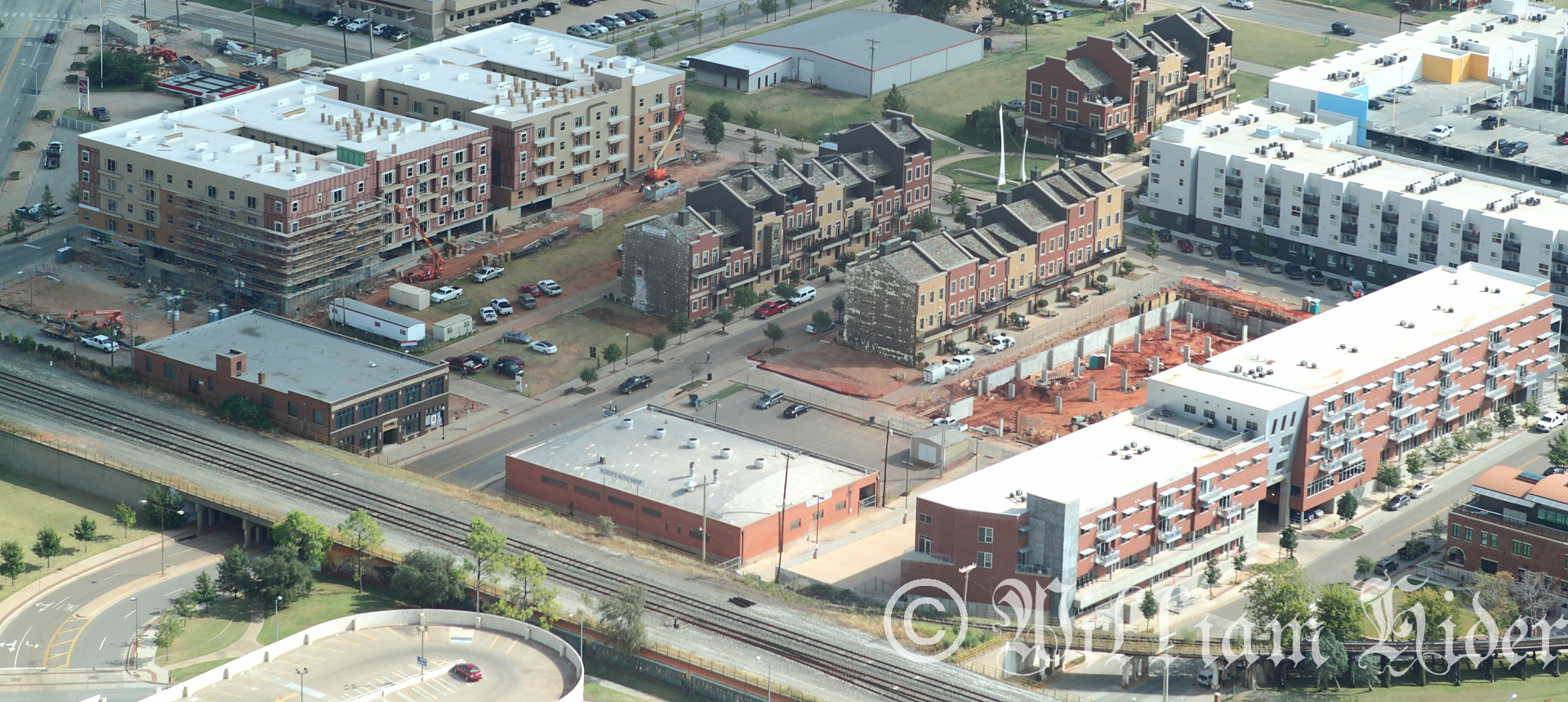
Residential construction in Oklahoma City’s Deep Deuce neighborhood. Photo by William Hider (Flickr).
All this is taking place within an area of the city that is just over one square mile. The new Twitter account @dtOKCBuilds is keeping tabs on all those red dirt construction sites. Historic urban neighborhoods in the miles surrounding downtown, dominated by renovated small apartment buildings and single-family housing, are also filling in with new residents.
Tulsa has also been experiencing a boom in residential options for downtown with hundreds of new apartments. Also important- Tulsa’s downtown has been establishing new amenity areas like the Brady and Blue Dome Districts. These areas represent the first collection of new bars, restaurants, and shopping in downtown Tulsa in a while. Over time, these neighborhoods will attract more housing development.
Below, Tulsa’s excellent new public space Guthrie Green is surrounded by new residential buildings and hotels.
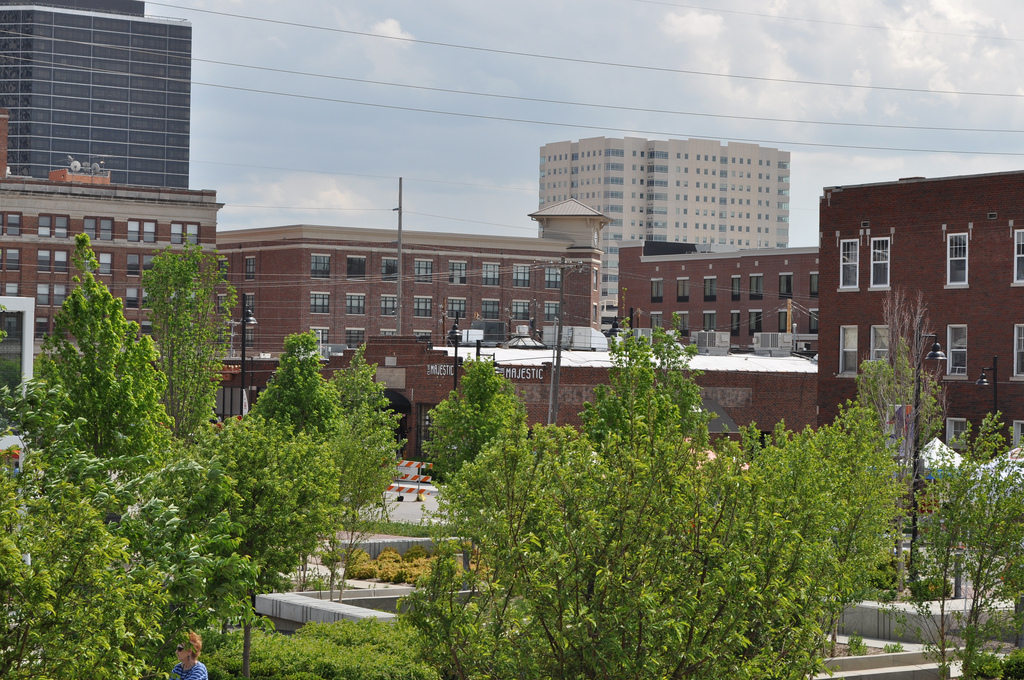
Residential development in Tulsa. Photo by Daniel Jeffries (Flickr).
2. Investing in Streets as Public Space
Tulsa’s extensive network of bike trails have been the best urban recreation network in the state for some time- with additional connections the trails can become even more useful for daily transportation.
Streetscaping has also paid off in downtown Tulsa, where new street designs like the one on the right are encouraging new investment.
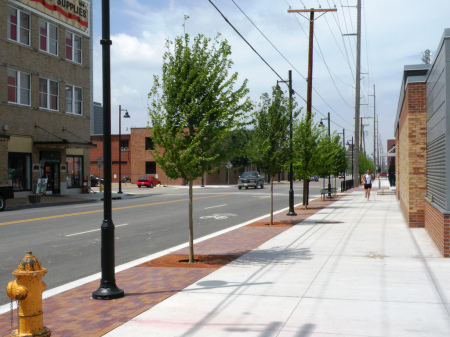
Streetscaping in Tulsa’s Brady District. Photo by Daniel Jeffries (Flickr).
In the rest of the city, about $50 million of MAPS 3 is building sidewalks and dedicated bike/walk trails in areas of high priority.
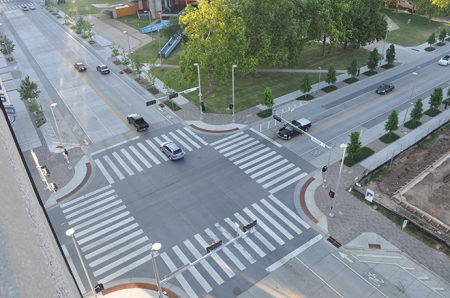
Oklahoma City streets redesigned by Project 180. Photo courtesy A Better Life OKC Blog.
Now, the city is using placemaking and walkability as a guide on urban neighborhood streets around town- as they did when they asked us to redesign Western Avenue earlier this year.
Jeff Speck, author of Walkable City, remarked that “Of the automobile-oriented cities in which I’ve been working, none has made such a dramatic commitment to reorganizing its street structure around welcoming pedestrians and bicycles in the way Oklahoma City has.” (via OJB)
3. Introducing New Transit Technologies
Oklahoma City’s 4.6-mile streetcar route was approved a few months ago, funded by $95 million in MAPS 3 funding. The streetcar is set to begin operations by 2017. The streetcar will serve the rapid influx of new residents to the downtown area- and if other cities are an indication, it will also help continue to spur additional residential development in the area.
OKC will also improve bus service beginning in 2014. The service will restructure routes to be more frequent and predictable, more closely following the characteristic grid pattern of the city.
The bus line will run at frequencies up to every 15 minutes.
About 20% of jobs and 15% of residents in Tulsa live within 1/2 mile of the proposed BRT corridor. The corridor also serves several of Tulsa’s prominent entertainment districts.
Tulsa BRT Route
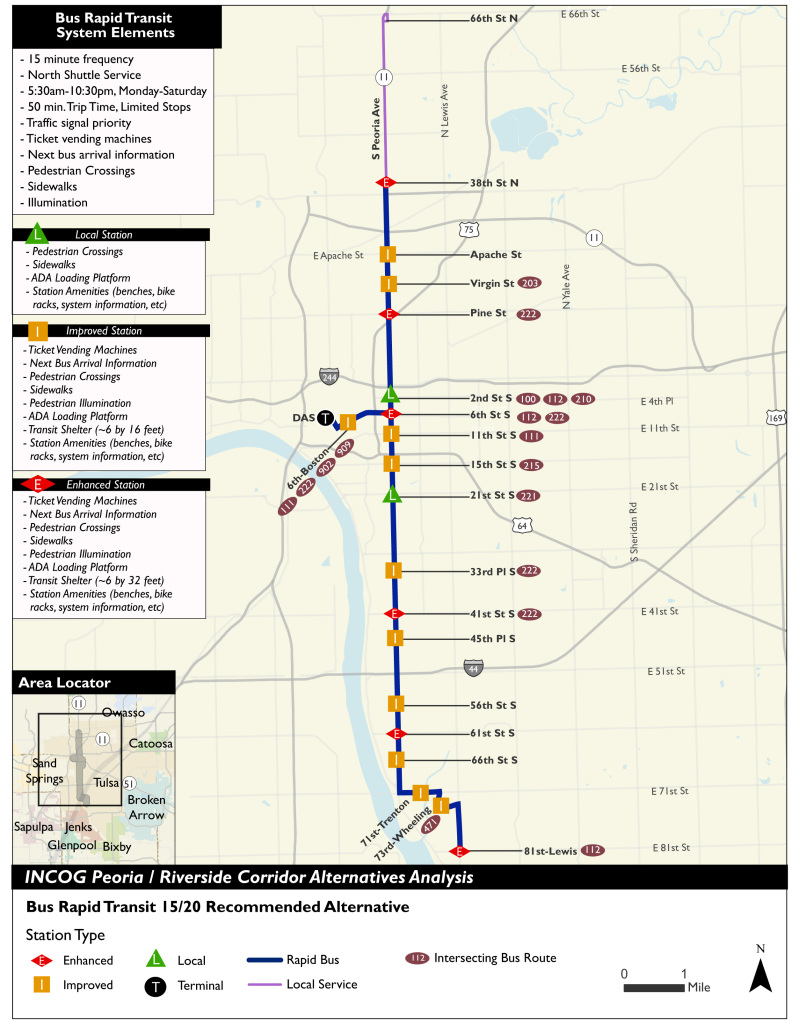
Source. Click image to view full size.
After decades of pursuing land use and infrastructure that discourage walking, biking, and transit use, Oklahoma’s big cities have their work cut out for them when it comes to providing viable transportation and lifestyle options. These three strategies of increased population density, improved infrastructure, and modern transportation will make a big difference in the coming years.


